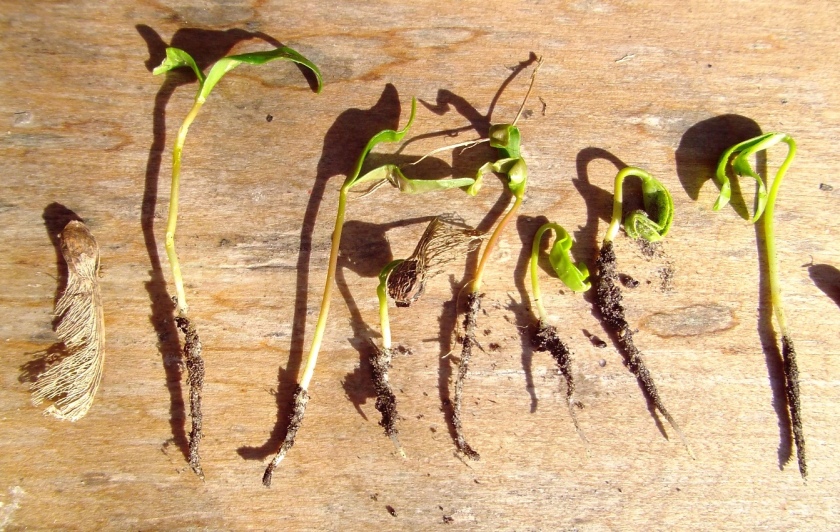It’s the time of year when sycamore seedlings start springing up seemingly everywhere. Their long and narrow seed leaves look nothing like the broad, lobed leaves of the adult trees. And, unless the old “helicopter” that the seed fell to earth with is still attached, you might wonder what these vibrant narrow-leaved seedlings are.

Sycamores (Acer pseudoplatanus) are one of those trees which fall into, out of and back into favour with the passing of time. They are classed as “non-native”, but they’ve been in the UK for hundreds of years. They’ve been classed as “invasive” but scholars and observers dispute whether they really are. They’ve been planted for shelter and then pulled up because they’re “not natural”, only to be replanted a few years later with the aid of grants. One thing’s for sure: sycamores seed prolifically! If you want to propagate them, that makes it especially easy: just pop the seed or a seedling in a pot. But if you don’t want them sprouting up in every nook and cranny, it’s easiest to pull them out now, while they’re tiny. Last year, there were reports of ponies being poisoned after eating large quantities of sycamore seeds. So, if you keep horses you might want to be mindful of that.

The earliest date of introduction in England is about 1487 according to Wikipedia. I think if a plant has been around that many years it is certainly “native”. We have native maples (also Acer) in the US that are weedy like the box-elder and silver maple. They’ve been planted outside of their native ranges and habitats for many years. Both make tons of seeds that will sprout in yards, gardens, alleys, abandoned lots and urban woods. Their roots clog drain pies and sewer lines.
I’ve read that maple leaves are toxic to sheep, too, but they must eat lots of them.
The whole concept of native vs non-native seems hugely tricky, and rather subjective to me: like most things with the politics of conservation:)
Thanks for commenting.
I agree. There are some species of plants here in the US like Veronica officinalis and Satureja vulgaris that may have been introduced by the Vikings when they tried colonizing eastern Canada. Or they may represent post-glacial disjunct populations. No one knows for sure. Certainly some populations of both are more recent introductions as well. But what to do about them is contentious.
😄 I was just going to write about them! They are popping up all over the garden….
They do seem to be particularly abundant this spring. I feel a teeny bit bad about pulling them up…but just a teeny bit!